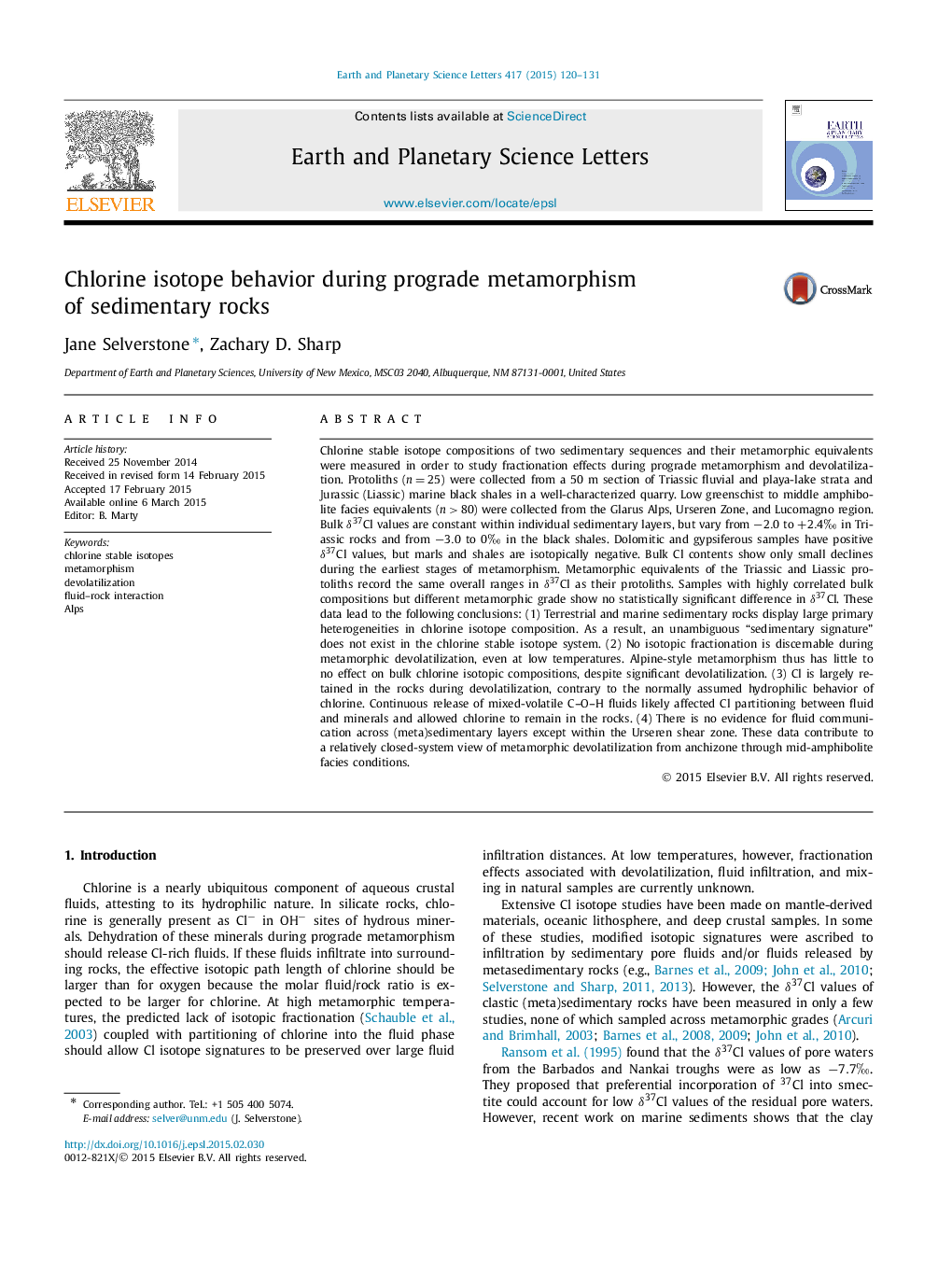| کد مقاله | کد نشریه | سال انتشار | مقاله انگلیسی | نسخه تمام متن |
|---|---|---|---|---|
| 6428392 | 1634739 | 2015 | 12 صفحه PDF | دانلود رایگان |
- Continental and marine sedimentary rocks show large primary heterogeneities in δ37Cl values.
- No unique “sedimentary” chlorine isotope reservoir can be defined.
- Prograde metamorphism/devolatilization of sedimentary rocks produces no significant changes in bulk-rock Cl isotope composition.
- Metamorphic release of mixed C-O-H fluids favors retention of chlorine in the rocks.
- Chlorine isotopes record relatively “closed-system” devolatilization in the Swiss Alps except within the Urseren shear zone.
Chlorine stable isotope compositions of two sedimentary sequences and their metamorphic equivalents were measured in order to study fractionation effects during prograde metamorphism and devolatilization. Protoliths (n=25) were collected from a 50 m section of Triassic fluvial and playa-lake strata and Jurassic (Liassic) marine black shales in a well-characterized quarry. Low greenschist to middle amphibolite facies equivalents (n>80) were collected from the Glarus Alps, Urseren Zone, and Lucomagno region. Bulk δ37Cl values are constant within individual sedimentary layers, but vary from â2.0 to +2.4â° in Triassic rocks and from â3.0 to 0â° in the black shales. Dolomitic and gypsiferous samples have positive δ37Cl values, but marls and shales are isotopically negative. Bulk Cl contents show only small declines during the earliest stages of metamorphism. Metamorphic equivalents of the Triassic and Liassic protoliths record the same overall ranges in δ37Cl as their protoliths. Samples with highly correlated bulk compositions but different metamorphic grade show no statistically significant difference in δ37Cl. These data lead to the following conclusions: (1) Terrestrial and marine sedimentary rocks display large primary heterogeneities in chlorine isotope composition. As a result, an unambiguous “sedimentary signature” does not exist in the chlorine stable isotope system. (2) No isotopic fractionation is discernable during metamorphic devolatilization, even at low temperatures. Alpine-style metamorphism thus has little to no effect on bulk chlorine isotopic compositions, despite significant devolatilization. (3) Cl is largely retained in the rocks during devolatilization, contrary to the normally assumed hydrophilic behavior of chlorine. Continuous release of mixed-volatile C-O-H fluids likely affected Cl partitioning between fluid and minerals and allowed chlorine to remain in the rocks. (4) There is no evidence for fluid communication across (meta)sedimentary layers except within the Urseren shear zone. These data contribute to a relatively closed-system view of metamorphic devolatilization from anchizone through mid-amphibolite facies conditions.
Journal: Earth and Planetary Science Letters - Volume 417, 1 May 2015, Pages 120-131
